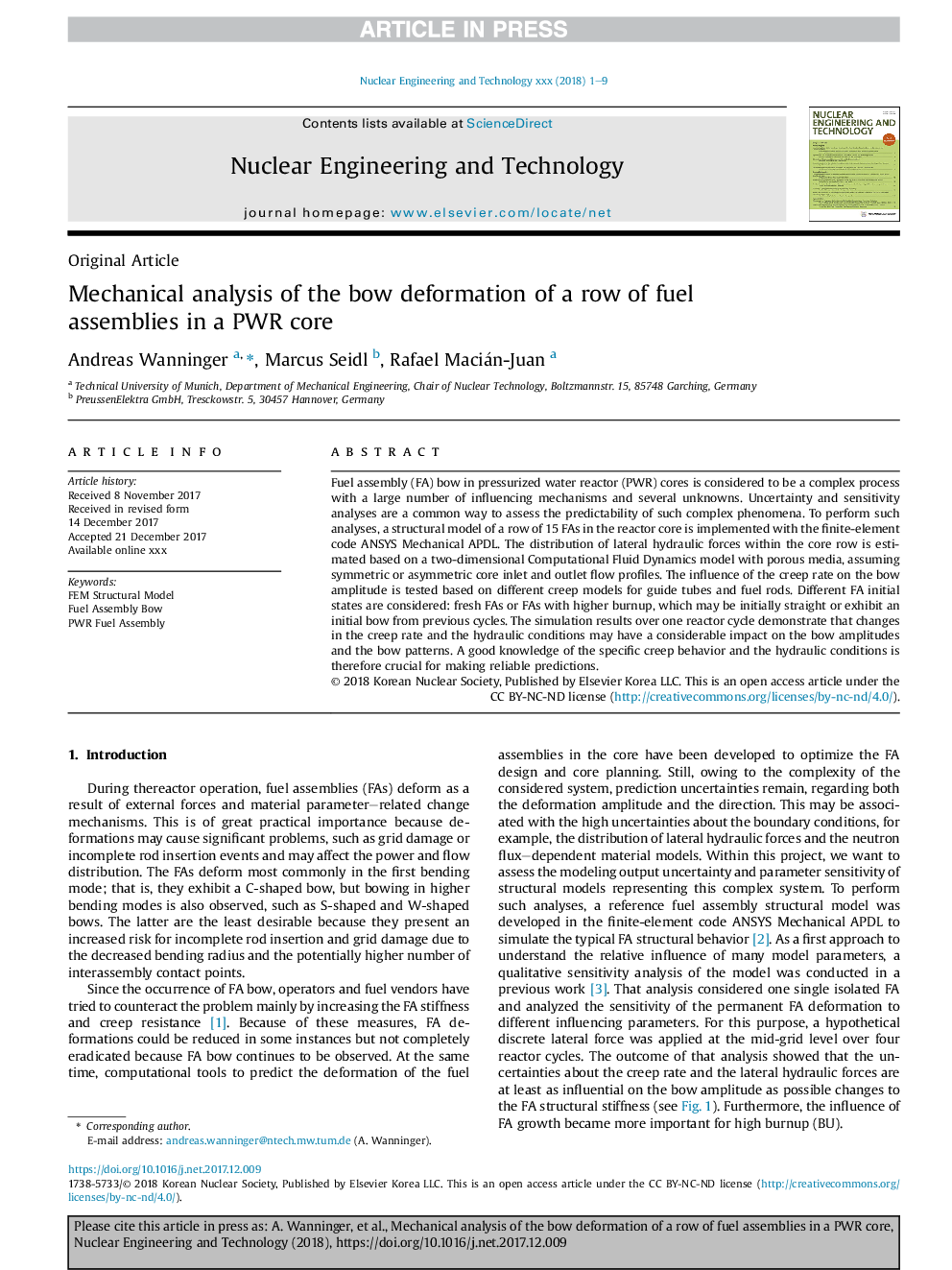| Article ID | Journal | Published Year | Pages | File Type |
|---|---|---|---|---|
| 8083840 | Nuclear Engineering and Technology | 2018 | 9 Pages |
Abstract
Fuel assembly (FA) bow in pressurized water reactor (PWR) cores is considered to be a complex process with a large number of influencing mechanisms and several unknowns. Uncertainty and sensitivity analyses are a common way to assess the predictability of such complex phenomena. To perform such analyses, a structural model of a row of 15 FAs in the reactor core is implemented with the finite-element code ANSYS Mechanical APDL. The distribution of lateral hydraulic forces within the core row is estimated based on a two-dimensional Computational Fluid Dynamics model with porous media, assuming symmetric or asymmetric core inlet and outlet flow profiles. The influence of the creep rate on the bow amplitude is tested based on different creep models for guide tubes and fuel rods. Different FA initial states are considered: fresh FAs or FAs with higher burnup, which may be initially straight or exhibit an initial bow from previous cycles. The simulation results over one reactor cycle demonstrate that changes in the creep rate and the hydraulic conditions may have a considerable impact on the bow amplitudes and the bow patterns. A good knowledge of the specific creep behavior and the hydraulic conditions is therefore crucial for making reliable predictions.
Related Topics
Physical Sciences and Engineering
Energy
Nuclear Energy and Engineering
Authors
Andreas Wanninger, Marcus Seidl, Rafael Macián-Juan,
